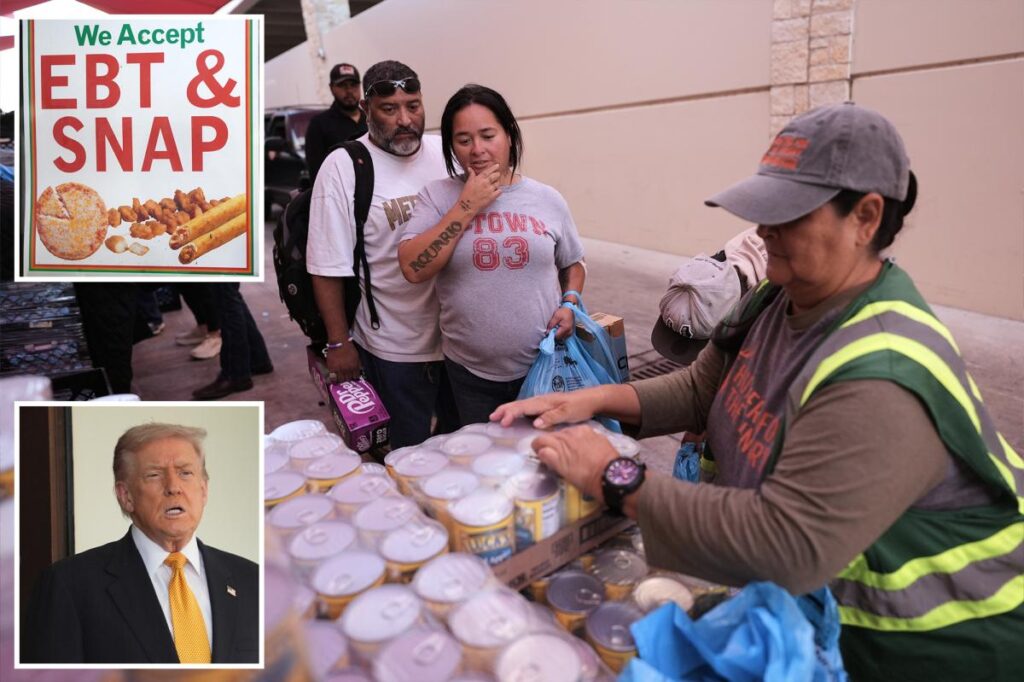The Trump administration has asked the Supreme Court to strike down a federal judge’s order requiring it to restore payments of SNAP benefits to millions of Americans that were halted due to the ongoing government shutdown.
The administration appealed to the high court after an appellate judge refused its request to allow it to only partially fund benefits through the Supplemental Nutrition Assistance Program for November.
Some of the more than 42 million Americans saw their SNAP benefits — also known as food stamps — restored for the month earlier this week when a federal judge issued an order requiring the Trump administration to make the payments that were put on pause after Oct. 31.
Within hours, Solicitor General D. John Sauer asked the justices to intervene, arguing that the lower court had forced the administration to spend money Congress hadn’t appropriated.
“This unprecedented injunction makes a mockery of the separation of powers,” Sauer wrote in an emergency filing.
The court battle left millions of low-income Americans in limbo, with some states racing to disburse aid while others waited for new guidance.
In Wisconsin, more than $104 million in benefits hit electronic cards at midnight for 337,000 households.
State employees “worked through the night,” Oregon Gov. Tina Kotek said, “to make sure every Oregon family relying on SNAP could buy groceries” by Friday.
Officials in California, Hawaii, Washington, Kansas, New Jersey and Pennsylvania confirmed they, too, had released full payments, while states such as Colorado, Massachusetts, and New York said recipients would receive benefits over the weekend.
The showdown stems from the Trump administration’s plans to cover only 65% of normal benefits, citing a lack of funds during the historic shutdown.
Two federal judges rejected that move last week, ordering the use of a $4.6 billion emergency reserve fund and authorizing the government to tap additional money to make up the rest of the $8.5 to $9 billion needed for November.
The administration had argued that diverting more cash would jeopardize other child hunger programs and said it was up to Congress to restore funding — blaming Democrats for prolonging the shutdown.
The fight has left families unsure when they will eat. Roughly 1 in 8 Americans rely on the benefits.
In Newark, NJ, single mother and college student Jasmen Youngbey stood in line at a food pantry Friday with her two sons.
“Not everybody has cash to pull out and say, ‘OK, I’m going to go and get this,’ especially with the cost of food right now,” she told the Associated Press.
Later in the day, her benefits appeared.
Sauer told the Supreme Court that several states moved quickly to “seize what they could of the agency’s finite set of remaining funds” before an appeal could be filed.
Once spent, Sauer wrote, there was “no ready mechanism for the government to recover those funds.”
The SNAP program provides up to $300 a month for individuals and nearly $1,000 for a family of four, though most receive less.
With the shutdown entering its third week, the dispute could determine whether benefits continue nationwide beyond November.
Some states took extraordinary steps to keep food aid flowing. Delaware Gov. Matt Meyer said his state used its own money to issue emergency weekly relief payments.
North Carolina, Illinois and Louisiana distributed partial benefits Friday, with full payments expected in days.
For millions of families, the checks can’t come soon enough.
“We moved with haste once we verified everything,” said Hawaii’s deputy human services director Joseph Campos II.
The Supreme Court has not indicated when it will rule.
With Post wires.
Read the full article here

